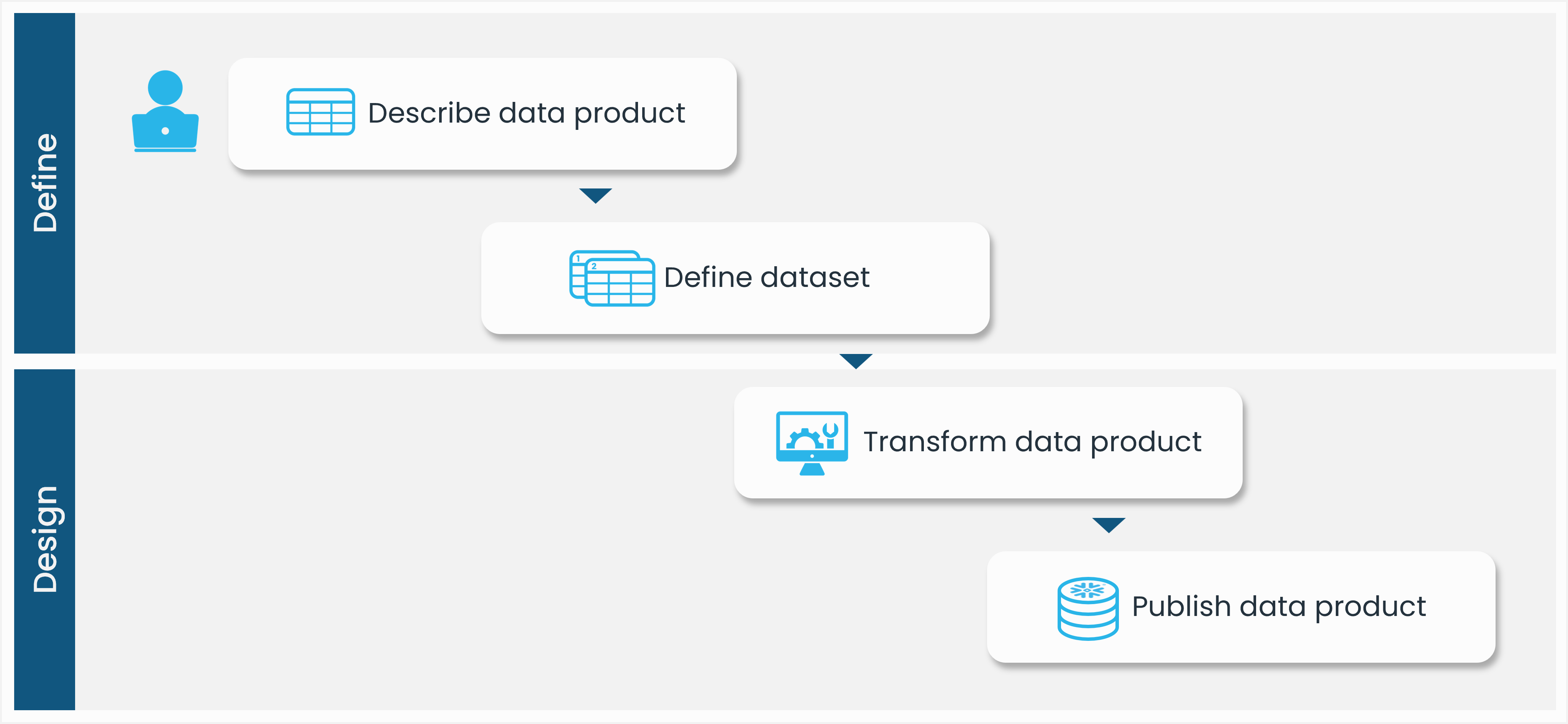Create Data Products with DataOps.live Create
DataOps.live Create automates data product building, management, and deployment. It helps you get started instantly. No setup is needed. Only a few clicks are required to create the data product project and feature branch.
Why a data product creator?
Building trusted data products requires significant time and resources, involving various stages like data ingestion, transformation, and deployment. This can be time-consuming and prone to errors as each step demands attention to detail, expertise in data management, and often specialized tools.
By providing a user-friendly interface and automating many of these tasks, DataOps.live Create:
- Simplifies the development process by eliminating lengthy manual configurations and editing and iteration cycles.
- Reduces the time-to-insight and allows users to focus on deriving value from their data rather than getting bogged down in technical details.
- Offers generative AI assistance on top of dbt Core to decrease data model creation time.
This app creates data products through the usual stages of data ingestion, testing, transformation, and deployment to Snowflake. It enhances data quality and consistency, reducing the risk of errors and ensuring reliable outputs. With the app, you can create data products using existing data in Snowflake and enhance them with service-level objectives and versioning, simplifying their delivery. You can generate source models based on existing Data Definition Language (DDL) and create a schema in Snowflake.
Get started by creating reliable data assets with a few clicks — no configuration or coding is needed. Then, customize these data assets in our browser-based development environment to meet consumers' specific needs.
Check out why the data product creator is your best fit:
- Automation: an efficient and automated way to build and manage data products and environments in an intuitive interface.
- Speed: time-to-insight is accelerated as the app removes manual configuration, simplifies editing, and reduces model creation time through generative AI.
- Trust: users know that data products have undergone rigorous quality control.
- Accessibility: relevant data is available, so people don't have to go and ask another team for it.
- Usability: a well-defined data product with a clear description is much easier to consume than a raw dataset.
Development overview
A data product journey outlines the lifecycle of a data product, including ideation, definition, and design. The focus is on the high-level milestones that must be completed to bring the data product from concept to production.
Key milestones of a data product journey typically include a discovery phase, a define phase, and a design phase
The discovery phase is where it all begins when creating a data product. Discovery identifies the problem or opportunity that the data product aims to address. The team gathers requirements, understands business goals, and analyzes available data. They also define the scope, timeline, and resources needed for the project. This first phase sets the stage for the next two steps in the development overview.
Generating data products in the data product creator is separated into two phases, as illustrated in the diagram below.

Define phase
Users must start by documenting all the attributes of a data product and making them shareable as a data contract.
The relevant dataset metadata is imported once the data product scope is defined. Importing includes getting dataset metadata from existing databases in Snowflake accounts or getting the dataset metadata from a DDL file.
Users must clearly define business goals, inputs and outputs, Service Level Objectives (SLO), Service Level Indicators (SLI), dataset schema, and attributes. By completing the define phase, Users provide consumers with essential information for the data product use.
Design phase
Data operations and governance come next through our powerful DataOps.live Develop and its AI Assist chat, where you can get instant responses to your queries while creating data products and troubleshooting challenges.
This development environment acts as a central tool for the data product development lifecycle, applying DataOps best practices of transformation, version control, continuous testing, and automated deployment. The integration of Assist into the data product creation workflow guides you in building models by suggesting code based on natural language prompts. Assist can create diagrams for you, and you can easily copy and paste error messages for it to help you correct your code syntax It understands business problem descriptions, offering transformational model suggestions. You can ask for more suggestions until satisfied, and then accept and tweak the code as needed before committing it to the DataOps project's repository.